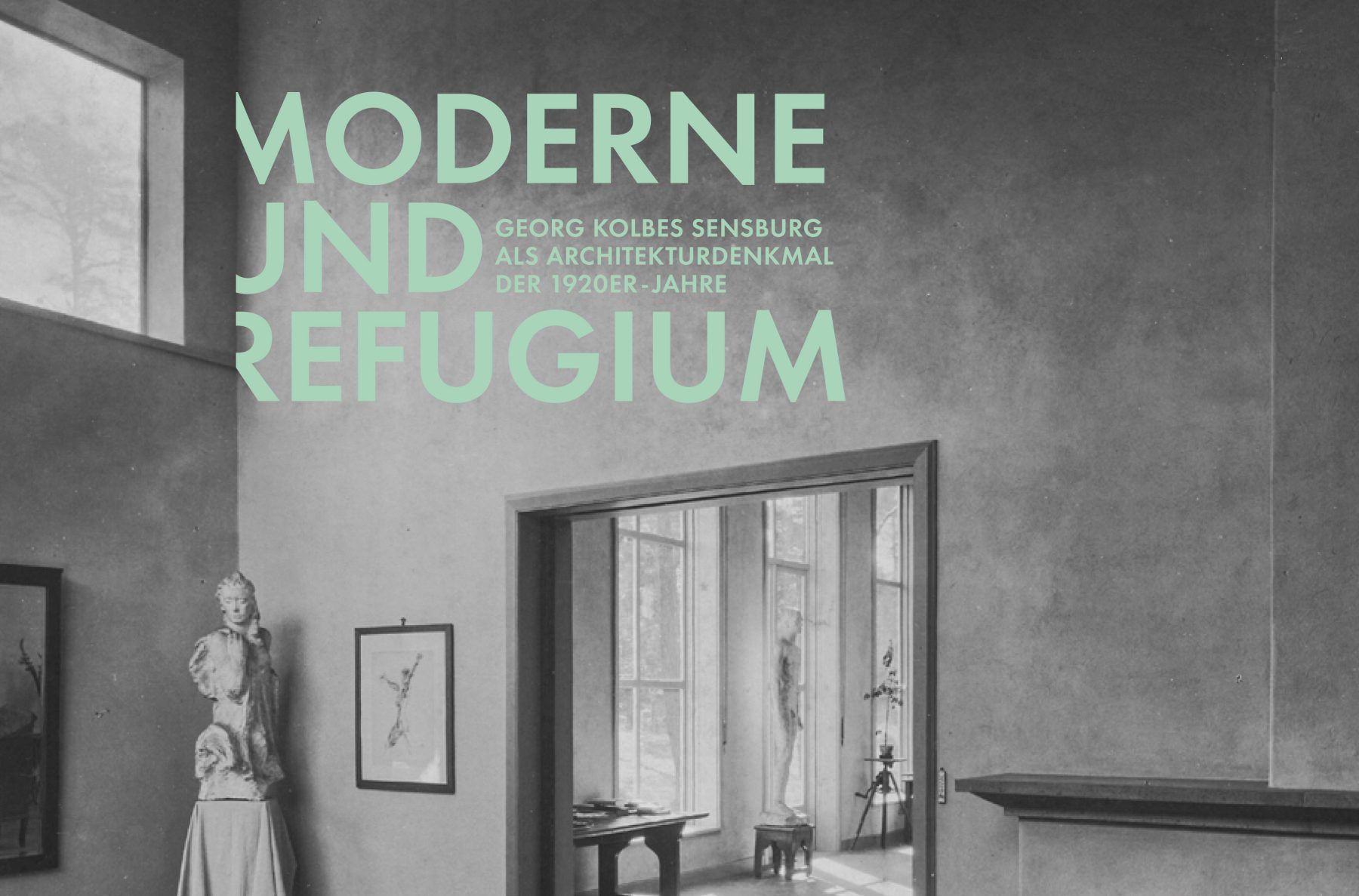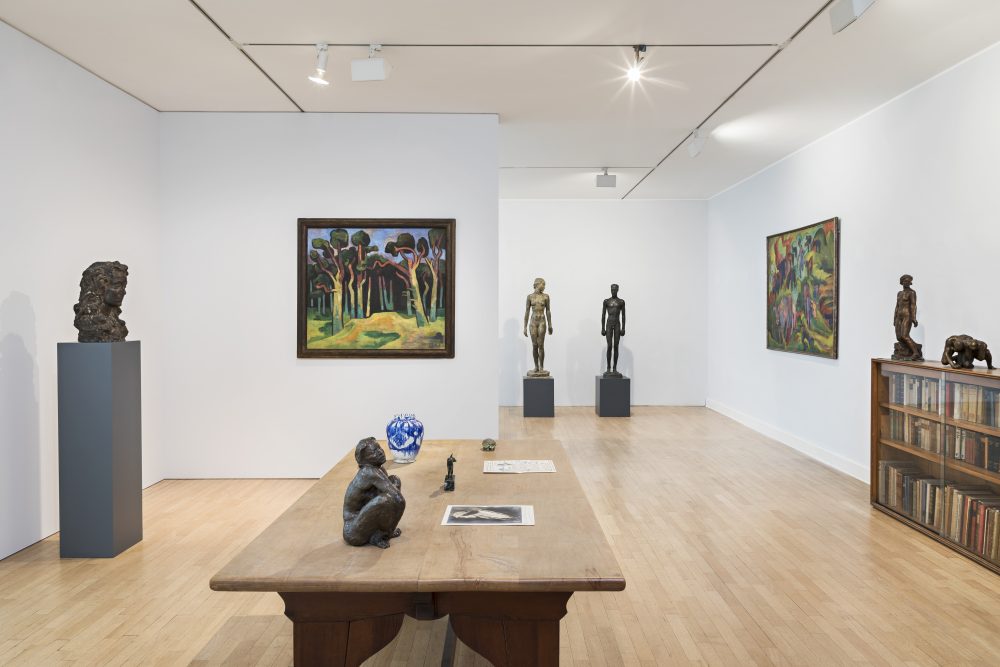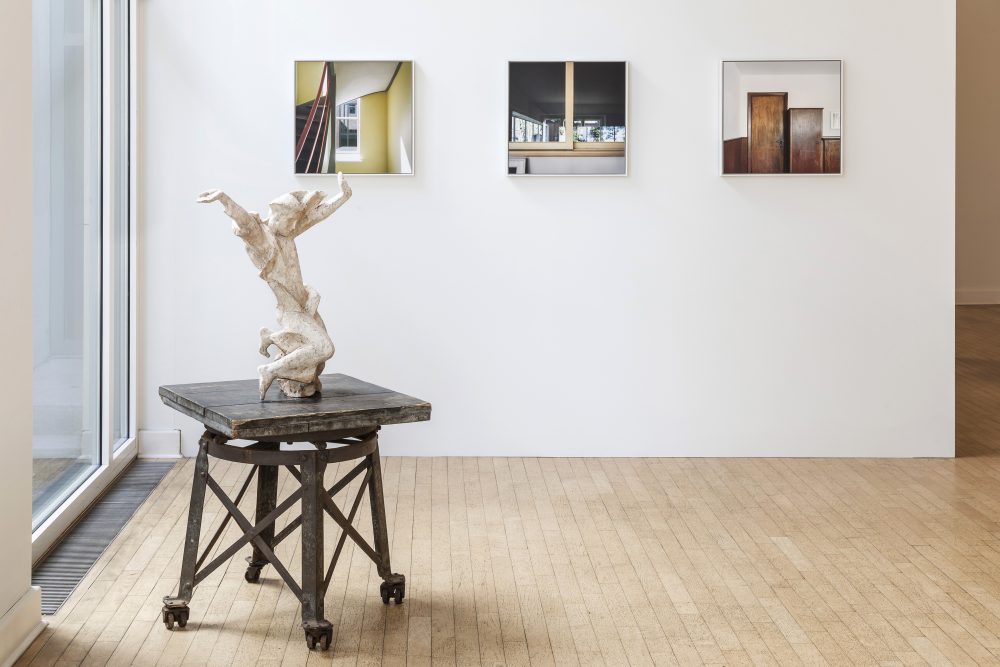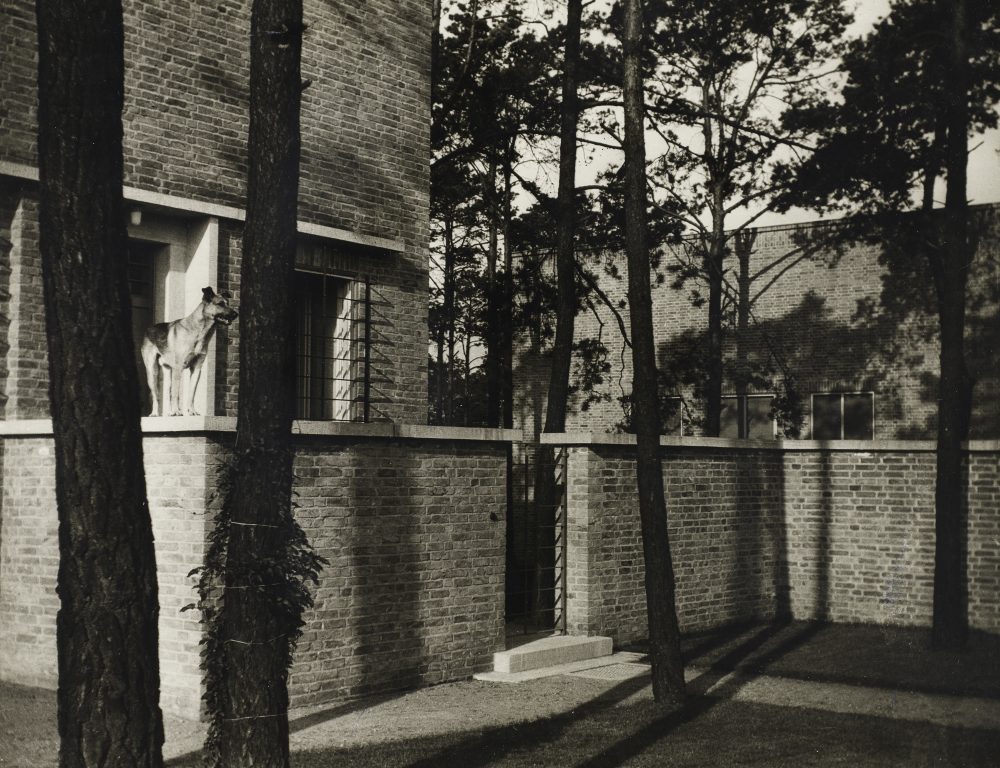
Modernism and Refuge
Georg Kolbes Sensburg as an Architectural Monument of the 1920s
13. September 2020 – 11. April 2021
In the late nineteen twenties, when his generously-sized studio house was being constructed in the Westend district of Berlin, the sculptor Georg Kolbe I 1877 -1947) was at the height of his artistic success. Represented by the major art dealers Cassirer and Flechtheim, he had customers all over the world and also enjoyed an excellent position in the network of Berlin’s artist circles. However, after his wife Benjamine unexpectedly died at the age of only 45, he desired a place to withdraw and work that was near her grave. This is the origin of his Sensburg, named after the location of the ensemble of modern brick structures on Sensburger Allee. Situated close to downtown Berlin and yet on the edge of the Grunewald forest, it was intended to be the structural manifestation of Kolbe’s ideal notion of the productive interplay between art, nature and architecture.
The sculptor had close ties to modernist architecture. From the outset, he was actively involved in the discourse concerning the further development of the New Objectivity style in building in conjunction with his collaboration with such architects as Ludwig Mies van Rohe, Bruno Taut, Hans Poelzig and Walter Gropius. To build his custom-designed home and studio, Kolbe commissioned the Swiss architect Ernst Rentsch and later the former Bauhaus student Paul Linder and he worked closely with both during the design phase of the work. The joint planning obviously profited from their concentration on the relationship between sculpture and space that would play a crucial role in Kolbe’s artistic work throughout his career.
Well-connected to public transportation, entirely electrified and with telephone as well as completely furnished baths, the brick building corresponded to the notions of modern living, embodying its definition of a new unfussy type of living comfort. As a studio, it fulfilled all the prerequisites needed to create the working conditions Kolbe sought as an artist. Especially the lighting throughout the house was meticulously planned, masterfully realizing the lucid connection between interior and exterior space.
With its ceiling-high windows, the large studio space opens up to the adjacent garden; a complex skylight allows neutral daylight to flow into the room while the high window sills direct framed views into the green of the surrounding nature. One enters the Sensburg through the brick wall that encloses the entire property including the inlying sculpture court, giving it an almost fortress-like character that contrasts the light clarity of its atmosphere. As a secluded refuge, it protected the artists from the glances of curious passersby and benefitted his work with models outdoors.
Kolbe’s artist studio was opened to the public exactly seventy years ago-as the first museum founded after WWII and the only Berlin artist house from the nineteen twenties in which the original function remains visible and tangible. Even today, the cubic brick building with sculpture garden exudes the modernist spirit of the time of its construction.
„Modernism and Refuge“ portrays Kolbe’s Sensburg in the mirror of its rich history. From early drawings to the construction phase, from the building’s private use to its present, the exhibition brings together a large number of hitherto unshown documents, which reveal the artist as a creative building client but also within the confines of his most private nucleus. Surrounded by family and friends as well as his dogs and cats, Kolbe becomes discernible as a man of various facets that have previously remained concealed behind his public role and attributions. A considerable portion of the exhibited material comes from the estate of the artist’s granddaughter, which only arrived in Berlin this year and is currently being integrated into the museum’s holdings.




